Scientific Academic Panel – Morning Edition
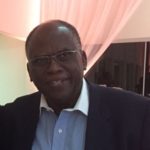
Scientific Academic Panel – Morning Edition
Chair: Ronald Siqueira Barbosa - SET Educational Committee / Professor of Optical Communication, Television Systems, Principles of Communication and Antennas
Graduated in Electrical Engineering (Electronics) from the University of Brasília, Master of Science (MSc) from the Military Institute of Engineering of Rio de Janeiro. He has extensive experience in the broadcasting market as a consultant and participates in broadcasters and engineering associations coordinating various work groups. He is Assistant Professor II of the University Center - Institute of Higher Education of Brasília - IESB, since 2012, where he teaches the subjects of Optical Communication, Television Systems, Communication Principles and Antennas, and Adviser of Completion Works - TCC and participation in TCC Examination Boards at IESB. Current member of the SET teaching committee.
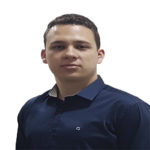
Face recognition techniques using artificial intelligence for audio-visual animations
Speaker: Daniel Rodrigues Ferraz Izario - Master's student - Unicamp
Bachelor's at National Institute of Telecommunications (Inatel) / MG, Brazil - in Computer Engineering (2017), master’s degree student at Computer from State University of Campinas (Unicamp). He is currently a freelancer in the web development and his interests are software, game, web design and digital image processing, focusing on the languages javascript and python.
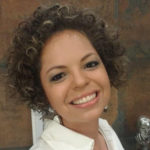
Social mobilization as a tool to support the switch off of TV and humanization of the process: the experience of Seja Digital in the Brazilians cities of the Rio Verde and Brasília.
Speaker: Deisy Fernanda Feitosa - Regional Manager - Seja Digital
Graduated in Social Communication (UFPB), master in Digital TV (Unesp) and doctor (2015) in Communication Sciences (ECA / USP). She was a researcher at Lavid/UFPB and worked at Univesp TV, TV Cultura's multiprogramming channel. He currently works at Seja Digital, the company that manages the digitization of TV in Brazil. For eleven years he has been studying: digital TV, digital convergence and digital inclusion.
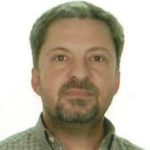
Isofrequency broadcast FM System, a rf spectrum optimization experience in Brasil (Jan 2017)
Speaker: Evandro Franco Tiziano - Director - Akron Technical Service ltda
Electrical, Electronic and Telecommunication Engineer Technology,Labor and Education Specialist Ex technical Director at: Globo Radio Network, Jornal do Brasil Network, Manchete Radio Network, TV Manchete Network Member in AERJ Technical Comitee - Rio de Janeiro Broadcast Association AERJ Counselor Winner in the 71° SOEA meeting, Engineering and Agronomy oficial week, sponsored by CONFEA - brazilian federation of engineering and agronomy.
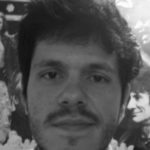
Comparison of Terrestrial DTV Systems: ISDB-Tb and ATSC 3.0
Speaker: Victor Morales Dionísio - Researcher - Universidade Presbiteriana Mackenzie
Electrical engineer graduated at Mackenzie Presbyterian University in 2010 and Master of Science in Electrical Engineering and Computing at Mackenzie Presbyterian University in 2017.
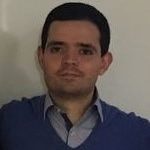
Robustness against the effects of multipath in an ISDB-T LDM broadcast system using diversity at reception
Speaker: Ricardo Seriacopi Rabaça - Researcher - Universidade Presbiteriana Mackenzie
Ricardo Seriacopi Rabaça received his degree in Electrical Engineering with emphasis in Electronics and Telecommunications from Mackenzie Presbyterian University in 2013. He received his M.S. degree in Electrical Engineering and Computation from Mackenzie Presbyterian University in 2017. He is interested in research in the areas of Telecommunications, Broadcasting and Software Defined Radio.
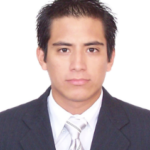
A Technical Study on the Transmission of HDR Content over a Broadcast Channel
television system. This paper makes a technical study about the system requirements to be considered for transmitting a HDR service in broadcast television and presents objective metrics in different coding scenarios regarding the HDR10 System and a
subjective assessment of the generated tone-mapped videos.
Speaker: Diego Arturo Pajuelo Castro - researcher - Unicamp
Diego Arturo Pajuelo Castro is a doctoral student at the Department of Communications (DECOM) of the Faculty of Electrical Engineering and Computation (FEEC) of the State University of Campinas (Unicamp) and works as a researcher at the Visual Communications Laboratory (LCV). He worked for a number of years at one of Peru's leading Network Operations Centers (NOC), Telefonica, which provides digital television services to the Latin American Region. Currently, his research interests are in the area of new technologies for television and multimedia systems and as part of the master's dissertation he has presented a Video Encoding Proposal for High Dynamic Range (HDR) Television System.
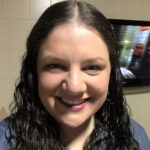
Development and Optimization of Antennas for HDTV Reception
Speaker: Kassia Toccolini - Master's student at Universidade Federal de Santa Catarina
She received the titles of Electronic Engineer (2016) by the Federal University of Santa Catarina (UFSC). She is currently in master’s degree in Electrical Engineering in electromagnetism area also at UFSC. She is part of Electromagnetism and Electromagnetic Compatibility Laboratory (MagLab) and Electromagnetic Compatibility and Engineering Group (GEMCO) at UFSC. Her areas of interest are electromagnetic fields, telecommunication and digital signals processing.

